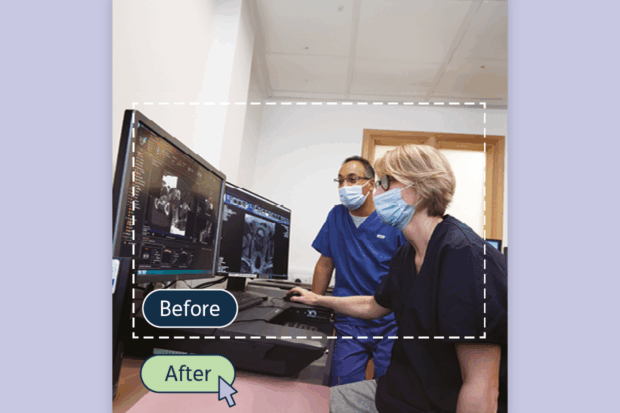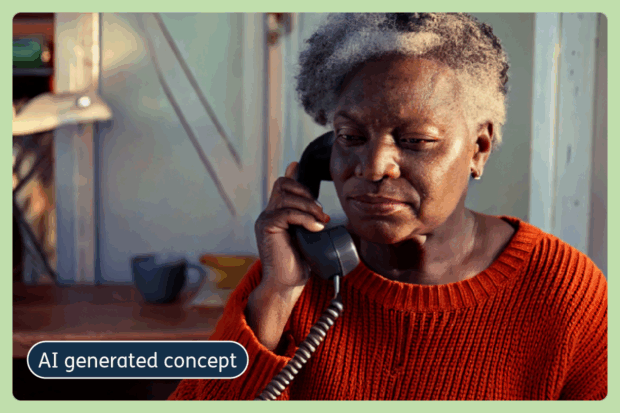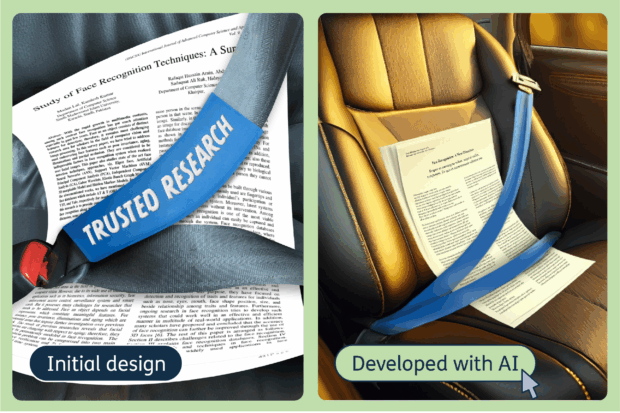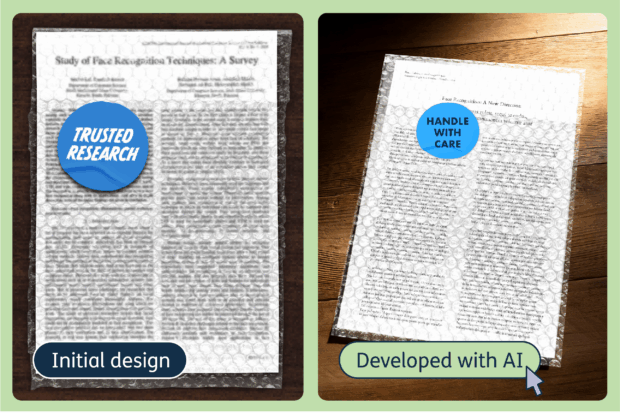
With tools that can generate images, suggest layouts and predict design trends, AI (artificial intelligence) has become a powerful asset for people working in digital media, including our own designers at D102. By automating tasks and acting as a soundboard for ideas, AI allows designers to focus on creativity while delivering work at a faster pace. This blog explains how we use AI in our work.
Different kinds of AI
Broadly speaking, artificial intelligence (AI) refers to technology that enables machines to mimic human intelligence by reasoning, problem solving, and even perception.
There are several different types of AI: Generative AI specialises in creating new content from patterns in existing data. Unlike traditional AI, which may analyse information, generative AI produces original content like text, images, or music, which makes it valuable in creative fields.
AI models that create images, such as DALL-E and Midjourney, use extensive datasets to generate unique visuals from text descriptions. With just a few words, designers can produce unique images, experiment with colour palettes, or build mood boards.
Text-based models, like ChatGPT, can generate coherent text in response to prompts. These tools help people in all disciplines brainstorm, draft, and refine written content more efficiently.
In fact, at the end of 2024, the Government Communication Service (GCS) rolled out its own text-based AI model called ‘Assist’ – a conversational AI tool for government communicators, integrating GCS professional guidelines, case studies, audience insights, and ethical frameworks to generate high-quality responses. It allows professionals to securely input data to draft text, plans, and ideas while ensuring confidentiality. With pre-engineered prompts tailored to common communication tasks, Assist enables both experienced and novice users to streamline time-consuming work, freeing up more time for creative and strategic thinking.
Examples of using AI in our work
Our team uses AI in various ways, adapting it to each project's specific needs. These are some examples…

Image expansion and background editing
Photoshop has become much-talked about recently for its AI-powered image expansion and enhancement tools. For instance, one team member used Photoshop’s generative AI to turn a close-up photo of a nurse at a computer into a scene with realistic details like a desk, chair, and ceiling. The same tools have been used to enhance images by extending backgrounds and removing unwanted objects, as well as replacing stock imagery to avoid photoshoot costs.

Concept development and experimentation
In the early stages of visual exploration for our projects, AI helps us experiment and visualise concepts. For example, we used Adobe Firefly to generate illustrations to test an envisioned style across different themes for a mood board. This allowed the team to explore multiple directions without fully developing each one. This approach saves time, especially for projects that require numerous thematic variations.

Idea generation and brainstorming support
ChatGPT has been a useful brainstorming partner on multiple projects. For example, in a project that required a list of safety-related items, ChatGPT helped compile and refine ideas for the items. It’s also proven valuable in generating icon concepts for abstract themes for projects, such as ‘decarbonisation’ and genders, where finding the appropriate visual representation can be difficult. ChatGPT’s ability to generate fresh ideas enhances creative processes and provides a foundation for further development.


Writing, presentations, and communication
AI has also been beneficial for refining and structuring our writing. Some team members use ChatGPT to improve their structure and written explanations of design ideas, making communication clearer and supporting the copy team’s collaboration. Another use of ChatGPT is to simplify complex emails and briefs, making it easier to extract key points and understand project requirements. This puts designers in the best position to drive their work forward to meet our client’s expectations.
Limitations
While AI offers remarkable efficiency and creative support, it does have limitations. AI-generated outputs need human oversight to make sure they are accurate. For instance, some tools may struggle with complex elements, producing distorted or unrealistic results. Often images of people do not contain sufficient diversity, which needs checking. Similarly, text-based AI, while excellent for idea-generation and drafting, can occasionally produce content that feels impersonal or generic, requiring time spent on refinement.
These limitations show that AI is best used in the way we use it at D102: as a complement to human expertise rather than a replacement. This means that we can support your communications project even more efficiently than ever, thanks to this new technology. Discover our work at www.design102.co.uk, or contact us at hello@design102.co.uk to find out more.
For regular Design102 updates ...